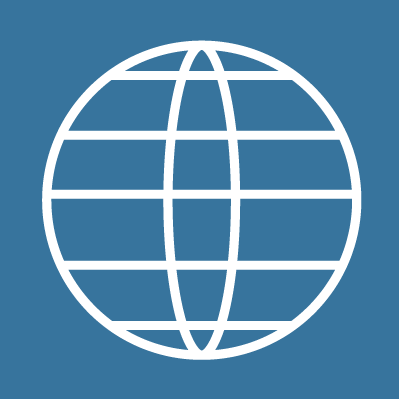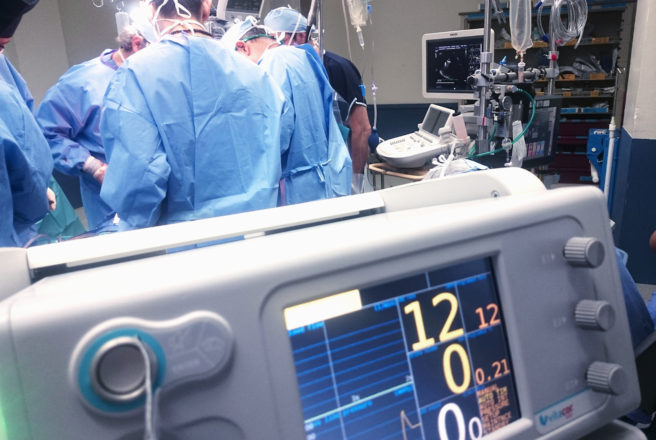April 16, 2021
Region South Denmark has reached a new milestone in linking medical device data across its whole hospital network in collaboration with Cambio Healthcare Systems.
Good healthcare data offers better insight into patients’ wellbeing, but the data is of limited use if it is not available when needed. Connecting medical devices to hospital-wide IT-systems makes intelligent use of this rich source of clinical data.
A key driver in todays Danish e-health sector is the desire to accelerate its transformation into a data-driven, evidence-based industry so that care can be delivered more efficiently. However, the utilisation and adoption of innovations across Danish health systems might be hampered by the inability to use and apply data – both quantitative and qualitative information – in a seamless fashion. This is even more evident in a naturally cautious society like healthcare where the collection and storage of health data remain decentralised despite years of effort.
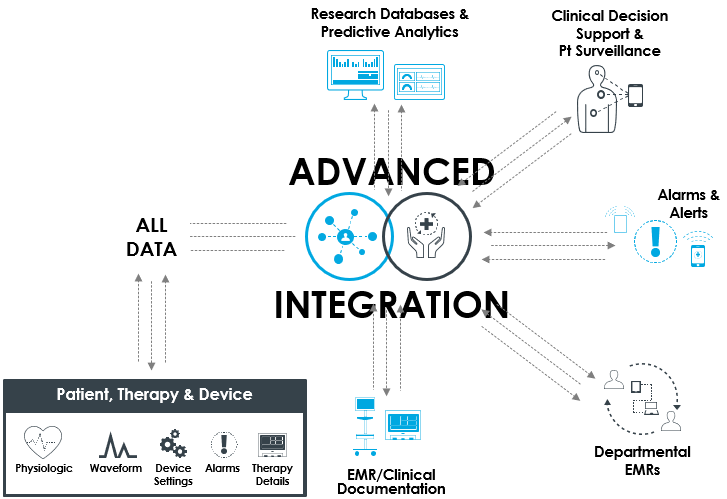
“Some years ago, we saw a trend where medtech vendors increasingly liked to sell platforms that can only integrate with their own devices. That means in five to ten years time, we would have different platforms with the same functions but for different parts of our equipment”.
Thomas Ørsted, the Medico-IT leader at Medico-technical, Region South Denmark.
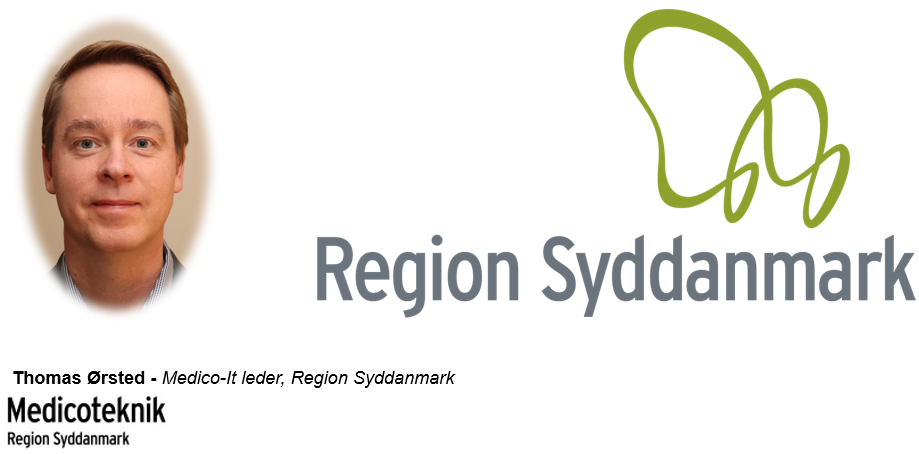
One person, one record, one platform
In 2018, the region procured a customised version of Cambio Healthcare Systems, Cambio Device Connectivity (CDC) platform, locally named, Medical Device Information Collection (MDIC) platform, as the core platform to collect, store, and disseminate data from medical devices in a real-time, structured, and standardised manner.
- “Instead of having many competing solutions doing the exact same thing, we wanted to have one solution that could capture data from all of our medical devices. When we transfer our patients from one department to another, we can still store the information in this one platform instead of spreading the data into several different IT solutions” he said in a recent interview.
As the number of medical devices used in hospitals grows with time, the amount of data to capture and to process will increase exponentially. Consequently, the need to connect these devices could pose a real challenge for those in the medico-technical world of healthcare.
Across the 13 hospitals located in the region, there are an estimated 9000 medical devices that are considered relevant to MDIC. The procurement of MDIC aimed to alleviate parts of the pressure their medical technical teams were facing, specifically in streamlining the workflow for its end users.
Leveraging this extremely valuable asset to its fullest required a system that not only automated the collection of data from medical devices from dispersed points-of-care, but also converted that data into a language that all systems will understand (HL7) and then distribute. With MDIC now in place, Region South Denmark has already started to move forward and implement the platform across the region. As mentioned by Ørsted, efforts to roll out the system warrant careful consideration and planning to avoid disruptions to current clinical operations.
“Our strategy is that, as soon as we need a new IT system in our region, and the system requires data from medical devices, then we will use MDIC.
Thomas Ørsted, the Medico-IT leader at Medico-technical, Region South Denmark.
One platform to connect all data
MDIC is a platform for connecting medical devices in all departments to all IT systems. This requires integrations to IT-systems that provide information about the patient’s location, integrations to user identity management systems, but also integrations to IT-systems that use the data. Region South Denmark has chosen to use Active Directory for user management, which makes computers log into web pages automatically, and also provides the ability to use smart-card systems to log in.
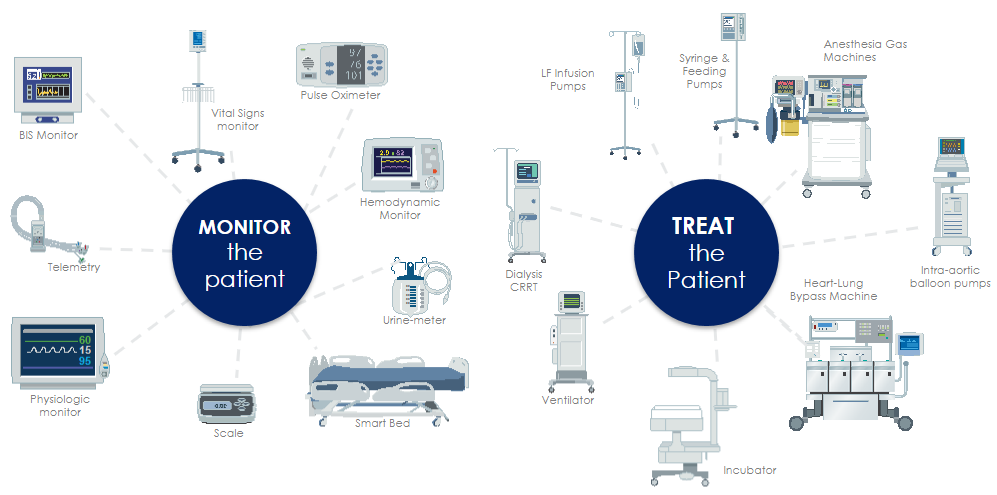
For data capture, MDIC can connect directly to the built-in data interface of medical devices, and can also connect via device-manufacturer provided software over the hospital network. All these integrations are based on standards-based built-in interfaces with a built-in customisation ability, which makes it easy to connect MDIC to new systems.
Due to the variation in work environments, the MDIC platform has multiple ways to ensure that the data is saved with patient identification and user identification, including portable touch-screen datahubs with smartcard login for spot-check monitors, and VESA mount serial-to-TCP/IP converter boxes for bed or wall mounting. For examination sites, tablet user interfaces and barcode scanning allow easy patient identification for devices that do not have a built-in patient identification method.
The receiving IT-systems, that visualise the data to the end-user, do not need to know how the data was captured. This allows these systems to visualise data in optimal ways for the clinical purpose, instead of using device-manufacturer provided visualisations that usually are unable to include data from other devices or other departments.
Developing competence through practical experience
MDIC can autodetect almost all devices based on its serial number, and connectivity configuration can be differentiated based on this. That allows for tracking device usage and location across the region to ensure optimal utilisation and deployment which is crucial to making the most effective use of costly, high-maintenance medical devices so essential to patient care. The availability of timely and appropriate device data to biomedical teams will ensure optimal device management and health, easing patient through-put and boosting patient safety and care. The ability to supply this data to not just one, but to multiple systems simultaneously and directly in the format that is required by that system helps break down the silos of data and provides critical and timely information for data-driven decision making where and when the clinician needs it.
Reflecting on the experience of MDIC procurement and implementation, Ørsted still believes that the platform confers tremendous benefits to the region.
- “If we should do this again, a lot of things would be exactly the same. Because we have the same goal, the same problem that we would like to solve with this platform. The only difference may be the implementation roadmaps that could be more robust in order to handle changes. Both Covid-19 and changed plans of associated IT systems caused a lack of momentum.”

